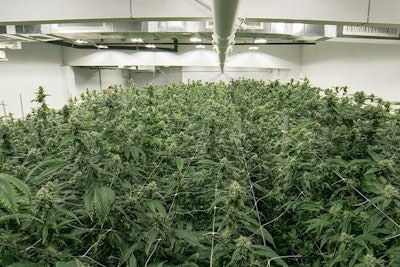
Cannabis cultivators have much to consider when scaling up their operation or launching a large-scale cultivation facility from scratch, and, sometimes, the overwhelming amount of options can cause business owners to overcomplicate the process by trying to implement too many ideas at once, according to Ryan Douglas, owner of cannabis consulting company Ryan Douglas Cultivation, LLC.
Here, Douglas outlines the common problems cultivators face when embracing large-scale cultivation, as well as tips for managing workflow, automation and more in a larger facility—without juggling too many variables at once.
Cannabis Business Times: What is one of the biggest challenges cultivators face when expanding their cultivation operation or launching a large-scale operation from scratch, and how can this be overcome?
Ryan Douglas: Most cultivation start-ups tend to overcomplicate the process. Commercial cultivation is complicated enough, but groups new to the industry try to implement all of the great ideas they read about all at once, and it becomes a disaster. With so many options in terms of new technology, cultivation equipment and growing methods, it can be difficult to select the best path forward. I always remind clients that the focus of a cannabis cultivation start-up should be coming to market as fast as possible with a quality end product. But a lot of groups get caught up in the weeds, fussing over equipment or doing R&D trials from the get-go. I tell clients not to be afraid to be boring. I would much prefer to use a basic, tried-and-true growing method and come to market with great product before my competitors, rather than begin the start-up by trialing lights, testing fertilizer and discovering the best way to grow. The latter is more expensive and much more time-consuming.
Start-ups can avoid this problem by taking the time to find an experienced head grower or cultivation consultant, and then follow their advice. Experienced growers can help groups steer clear of common pitfalls early in the planning stage, long before bad ideas have a chance to manifest themselves on the production floor. Groups involved in expansion projects can avoid overcomplication in a similar way, simply by duplicating whatever is currently working for them. If rapid expansion is key, eliminating as many unknowns will go a long way towards realizing a quick increase in production.
CBT: Which aspects of a facility’s workflow processes need adjusted as the operation scales up?
RD: Transitioning from vegetative cuttings (clones) to tissue culture is one workflow process that should be adjusted as small growers become massive growers. In Colombia, for example, start-ups are beginning cultivation with anywhere between 100,000 and 1,000,000 square feet of production. At these levels, tissue culture is an appropriate strategy for producing hundreds of thousands of young plants each year. Although the tissue culture process takes about 10 weeks longer than the traditional cloning process, it’s a viable method for producing millions of disease-free, genetically identical plants at the same time.
CBT: Which areas of the operation can be automated during expansion to streamline processes?
RD: Beyond 40,000 square feet of cultivation, operators should consider automating as much as possible. Under an acre, activities like hand watering, manual operation of climate control equipment and trimming can be done on a pretty basic scale. Beyond this point, it seems less efficient to do everything by hand. I recommend automating irrigation and fertigation processes, all functions involved in climate control and especially trimming.
CBT: What are some tips and best practices for maximizing canopy space and yield in a large-scale operation?
RD: I prefer to use lots of small plants to fill out a canopy, rather than grow fewer, larger plants. Crop cycles are quicker, meaning more turns per year. Also, the longer a plant is in production, the more time it has for something to go wrong. Quick crops keep the plants fresh and growers on their toes. Waiting several months for a plant to grow vegetatively and fill out a plant canopy is an invitation for problems. I find a three-week veg cycle to be just about perfect—you end up flowering the plant around 15-18 inches of height and you finish the crop with a manageable-sized plant.
CBT: What are some tips and best practices for pest management in large-scale cultivation?
RD: The first step is to maintain healthy plants. Stronger plants will give pests and disease a run for their money. This can be as simple as providing basic plant needs on time, such water and fertilizer. If growers can avoid repeatedly drying out their plants, or over-watering them, the entire organism will be better prepared to deal with pest or disease infestations.
With regards to managing insect populations, I recommend establishing a beneficial insect program prior to expanding cultivation to a new site. This means identifying your principal contact at the beneficial insect supplier and inviting them to your grow. Discuss your cultivation plan with them, because how you grow will greatly influence the beneficial insect program they recommend. Determine who in your group will be responsible for the timely ordering and receipt of the beneficials, and who will be responsible for monitoring progress and adjusting the program. I have had great success controlling damaging insect populations by implementing a beneficial insect program early. It’s a critical component to expanding cultivation to a large scale.

























